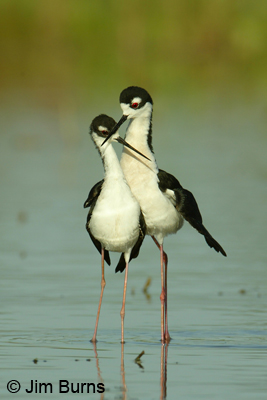
SONIC BOOM
You're taking a winter walk in the desert and you hear a sudden, explosive "pop" like a ground squirrel's call, but it's above you. You jerk your head up but don't see a thing. The minute you look down It happens again. Are you losing your mind?
Male Anna's hummingbirds perform a steep dive display, in the form of a "J" from as high as 100 feet. At the bottom of the dive air rushing over the tail feathers produces this startling sound, but the bird quickly climbs out for another dive. The female object of this display may be perched nearby.
FUNNY DUCKS
You're trying to identify ducks at the local pond and you see some that sort of look like mallards, but they have odd head plumes or variegated plumage you can't find in your field guide. Have you stumbled on an exotic rarity?
They're exotic all right. Mallards are perhaps the most sexually promiscuous of avian species. The males will mate with anything that swims, including escaped geese twice their size.
DINNER DATE
You're watching your neighborhood roadrunner with a lizard in its bill. A second roadrunner appears, yours runs to it and gives it the lizard, but then jumps on it and they appear to squabble over possession. What's that all about?
The roadrunner is one of several species whose male offers a prospective mate a pre-copulatory food item. Avian copulation takes about two seconds. You blinked and missed it, but the roadrunner may be the only species that snatches the prey back afterwards. Don't try this at home.
WATER BALLET
You're birding at Gilbert Water Ranch and you notice a pair of black-necked stilts in shallow water, elegant in their black and white plumage and long pink legs, do a short, graceful minuet with crossed bills before breaking off to continue feeding. Is this some kind of courtship dance?
Yes, this beautiful ballet is post-copulatory and promotes pair bonding.
ROLE REVERSAL
You're thinking you've got avian copulation all figured out. You're driving across Colorado, and you see two shorebirds mating, but the larger, more brightly plumaged bird is on the bottom. Huh?
Wilson's phalarope, a Great Plains species, practices polyandry. The female, larger and more colorful, lays the eggs, then leaves the smaller, drabber male to incubate them and care for the young while she goes off to mate with other males. Polyandry occurs in one percent of avian species.
These are but a few of the mysteries of avian sexual life--same basic instinct as ours but fascinating and different strategies.